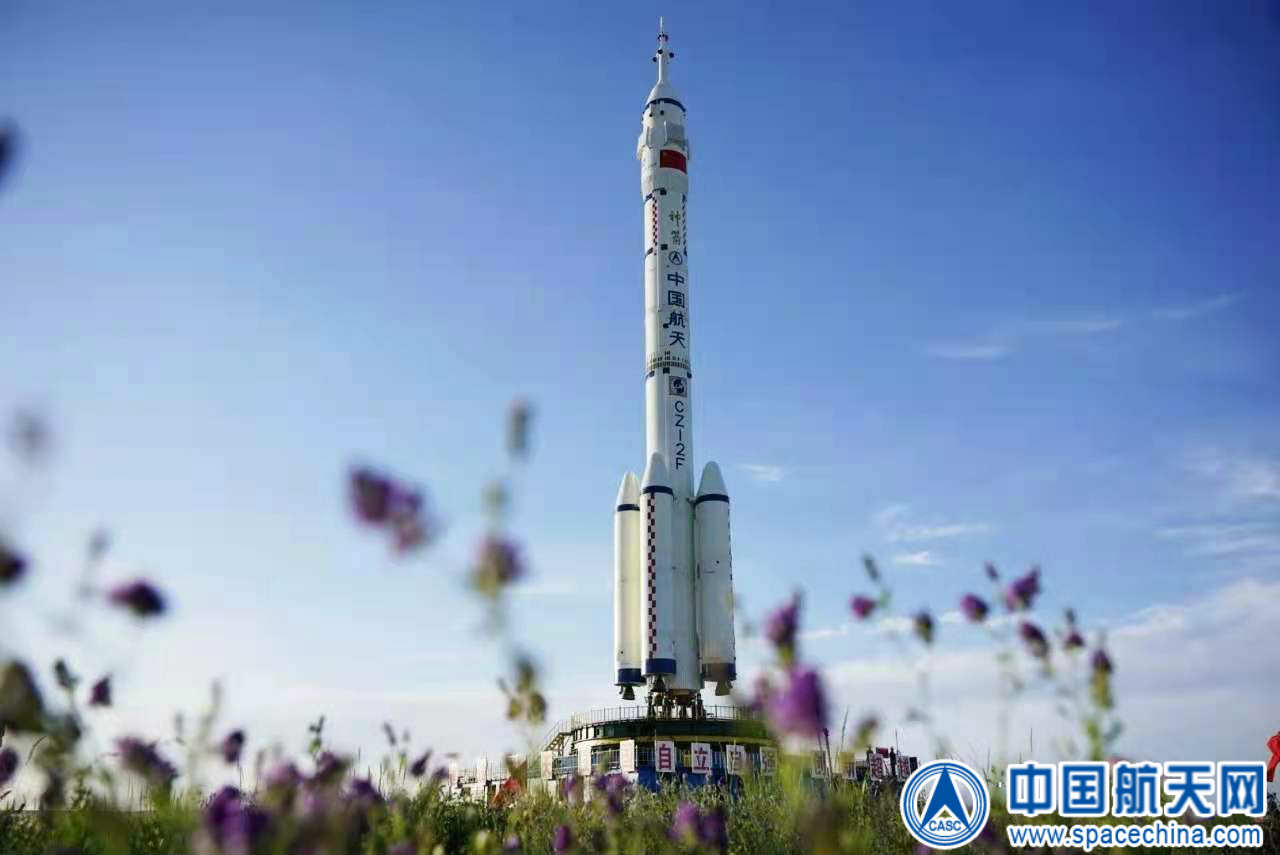Update for 9:55 p.m. EDT: China has successfully launched the Shenzhou 12 astronaut mission to its Tiangong space station core module Tianhe. See videos, images and a full launch wrap here.
China is poised to launch its first crewed spaceflight in nearly five years.
The Shenzhou 12 mission is scheduled to lift off tonight (June 16) from Jiuquan Satellite Launch Center in northwest China at 9:22 p.m. EDT (0122 GMT and 9:22 a.m. Beijing time on June 17), Chinese space officials announced on Tuesday (June 15).
You can watch the launch live here and on Space.com's YouTube, courtesy of China's CCTV news service, beginning at 6 p.m. EDT (2200 GMT). Shenzhou 12 will launch atop a Long March 2F rocket and send three astronauts to Tianhe ("Harmony of the Heavens"), the core module of China's new space station.
Related: The latest news about China's space program

The identity of the three Shenzhou 12 crewmembers was also announced on Tuesday. They are all men: astronauts Nie Haisheng, Liu Boming and Tang Hongbo. Nie has flown twice before, on the Shenzhou 6 mission in 2005 and Shenzhou 10 in 2013. Liu flew on Shenzhou 7 in 2008, and Tang is a spaceflight rookie, according to China's state-run Xinhua news agency.
The most recent Chinese crewed spaceflight, Shenzhou 11, launched in October 2016. That mission carried three astronauts to the Tiangong 2 space lab, a prototype precursor of the new station, for a one-month stay.
Get the Space.com Newsletter
Breaking space news, the latest updates on rocket launches, skywatching events and more!
The Shenzhou 12 crew, by contrast, will spend three months aboard Tianhe, which launched to low Earth orbit on April 28. Though the module has been aloft for less than two months, it has already received a robotic visitor — the Tianzhou 2 cargo craft, which delivered 6.6 tons of supplies to the core module late last month.
Shenzhou 12 is the third of 11 missions that will be required to complete the construction of China's new space station, Chinese space officials have said. Two of those flights will loft additional modules, which will link up on either side of the central Tianhe. There will also be three more robotic cargo missions and three more crewed flights during the construction phase, which is expected to wrap up by the end of 2022.

The Shenzhou 12 crew will perform a range of repair and maintenance activities during their three months aboard the 54-foot-long (16.6 meters) Tianhe, Chinese space officials have said. Some of this work will likely be done on the outside of the module.
"Astronauts coming out of the cabin will become a new routine, and the duration of such activities will be greatly expanded," Yang Liwei, director of the China Manned Space Engineering Office, told Chinese newspaper The Global Times last month, referring to the members of all four crewed missions that will visit the space station during its assembly phase. (Yang is a former astronaut. In 2003, he made history as the first person China launched into space.)
The space station construction is part of a broader ramp-up for China's space program, which continues to operate a rover on the moon's far side and last month put a rover called Zhurong down on Mars.
China is not part of the International Space Station coalition. In fact, since 2011, U.S. law has prohibited NASA and the White House Office of Science and Technology Policy from cooperating with their Chinese counterparts on space activities, unless such cooperation has been approved in advance by Congress.
Mike Wall is the author of "Out There" (Grand Central Publishing, 2018; illustrated by Karl Tate), a book about the search for alien life. Follow him on Twitter @michaeldwall. Follow us on Twitter @Spacedotcom or Facebook.
Join our Space Forums to keep talking space on the latest missions, night sky and more! And if you have a news tip, correction or comment, let us know at: community@space.com.

Michael Wall is a Senior Space Writer with Space.com and joined the team in 2010. He primarily covers exoplanets, spaceflight and military space, but has been known to dabble in the space art beat. His book about the search for alien life, "Out There," was published on Nov. 13, 2018. Before becoming a science writer, Michael worked as a herpetologist and wildlife biologist. He has a Ph.D. in evolutionary biology from the University of Sydney, Australia, a bachelor's degree from the University of Arizona, and a graduate certificate in science writing from the University of California, Santa Cruz. To find out what his latest project is, you can follow Michael on Twitter.









